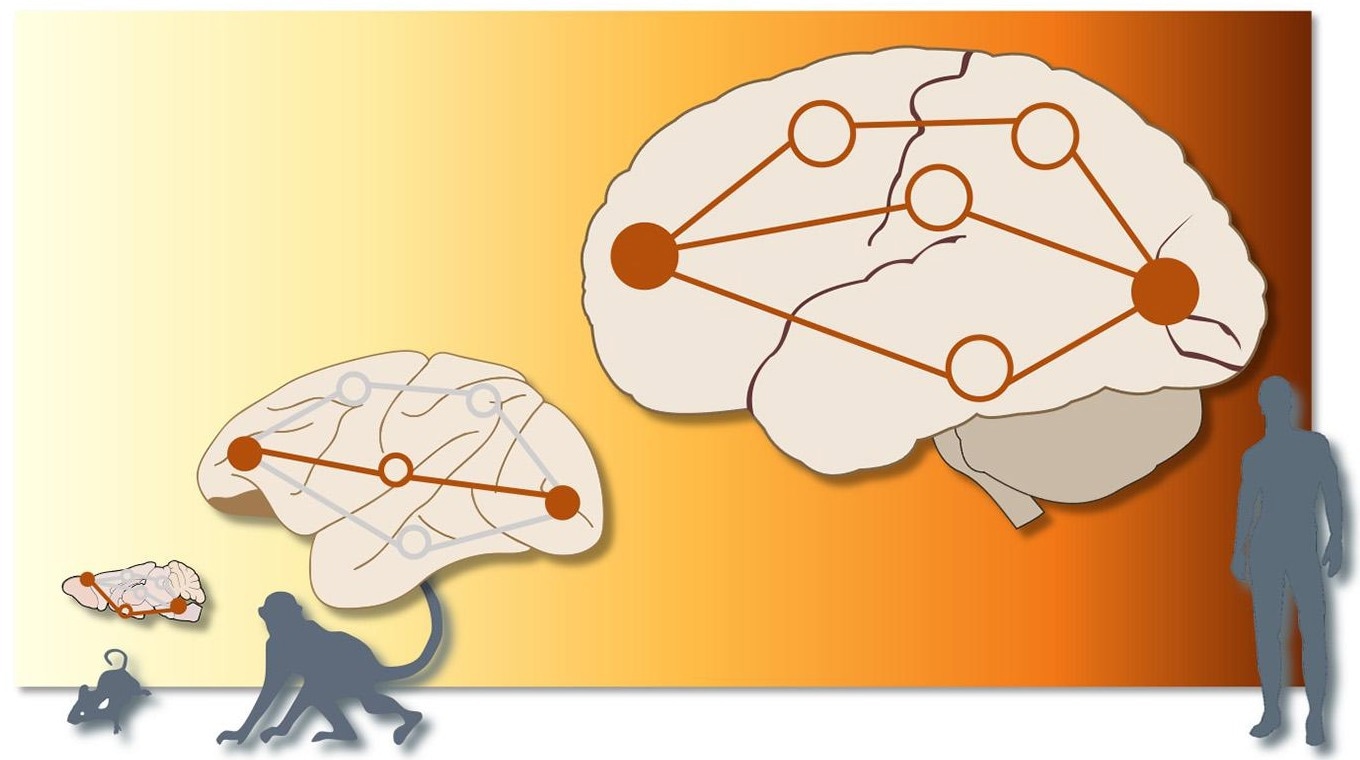In a comparative study of communication networks in the brains of humans, macaques, and mice, researchers from EPFL discovered that only human brains transmit information through multiple parallel pathways. This finding provides new perspectives on mammalian evolution.
 In the mouse and macaque brains, information was sent along a single “road”, while in humans, there were multiple parallel pathways between the same source and target. Image Credit: Alessandra Griffa CHUV/EPFL CC BY-SA
In the mouse and macaque brains, information was sent along a single “road”, while in humans, there were multiple parallel pathways between the same source and target. Image Credit: Alessandra Griffa CHUV/EPFL CC BY-SA
EPFL's Senior Postdoctoral Researcher, Alessandra Griffa, employs travel metaphors to describe brain communication networks. She likens brain signals to journeys from a source to a target, establishing polysynaptic pathways that intersect multiple brain regions, akin to a road with numerous stops along the way.
Griffa, based in the Medical Image Processing Lab (MIP:Lab) at EPFL’s School of Engineering and a research coordinator at CHUV's Leenaards Memory Center, explores the patterns of information transmission to understand how messages are sent and received.
In a recently published study in Nature Communications, she collaborated with MIP:Lab head Dimitri Van De Ville and SNSF Ambizione Fellow Enrico Amico to develop "brain traffic maps" for comparison between humans and other mammals.
Using open-source diffusion (DWI) and functional magnetic resonance imaging (fMRI) data from awake and resting subjects, including humans, macaques, and mice, the researchers reconstructed brain “road maps” through DWI scans. Additionally, fMRI scans revealed illuminated brain regions along each “road,” indicating the relay of neural information.
Employing information and graph theory to analyze multimodal MRI data, the researchers, led by Griffa, emphasized that this innovative combination of methods yielded fresh insights into the study of brain communication networks.
What’s new in our study is the use of multimodal data in a single model combining two branches of mathematics: graph theory, which describes the polysynaptic ‘roadmaps’; and information theory, which maps information transmission (or ‘traffic’) via the roads.”
Alessandra Griffa, Senior Postdoctoral Researcher, École polytechnique fédérale de Lausanne
Griffa added, “The basic principle is that messages passed from a source to a target remain unchanged or are further degraded at each stop along the road, like the telephone game we played as children.”
The researcher's methodology unveiled that non-human brains transmitted information along a singular “road,” whereas in humans, multiple parallel pathways existed between the same source and target. Moreover, these distinct parallel pathways were akin to fingerprints, offering a unique identifier for individuals.
“Such parallel processing in human brains has been hypothesized, but never observed before at a whole-brain level,” Griffa summarizes.
Potential Insights for Evolution and Medicine
Griffa emphasizes the elegance of the researchers' model, highlighting its simplicity and its ability to inspire novel perspectives and research directions in evolution and computational neuroscience.
One notable application is the connection of these findings to expanding the human brain volume over time, leading to more intricate connectivity patterns.
Griffa added, “We could hypothesize that these parallel information streams allow for multiple representations of reality, and the ability to perform abstract functions specific to humans.”
She further notes that while this hypothesis remains speculative, given that the Nature Communications study did not involve testing subjects’ computational or cognitive abilities, these are inquiries she aims to investigate in future research.
We looked at how information travels, so an interesting next step would be to model more complex processes to study how information is combined and processed in the brain to create something new.”
Alessandra Griffa, Senior Postdoctoral Researcher, École polytechnique fédérale de Lausanne
Being a researcher specializing in memory and cognition, she holds a particular fascination for employing the model established in the study to examine whether parallel information transmission might provide resilience to brain networks.
This could potentially contribute to neurorehabilitation post-brain injury or aid in preventing cognitive decline in age-related pathologies.
Some people age healthily, while others experience cognitive decline, so we’d like to see if there is a relationship between this difference and the presence of parallel information streams, and whether they could be trained to compensate neurodegenerative processes.”
Alessandra Griffa, Senior Postdoctoral Researcher, École polytechnique fédérale de Lausanne
Source:
Journal reference:
Griffa, A., et al. (2023) Evidence for increased parallel information transmission in human brain networks compared to macaques and male mice. Nature Communications. doi.org/10.1038/s41467-023-43971-z.